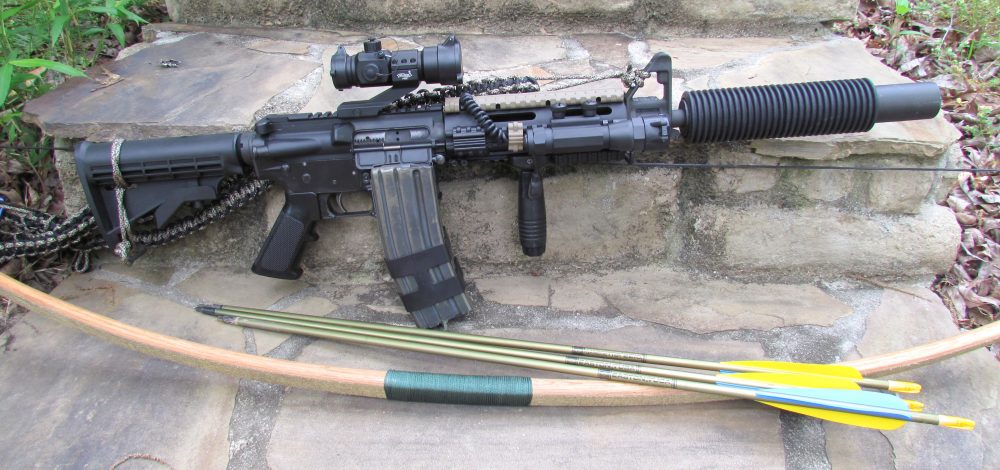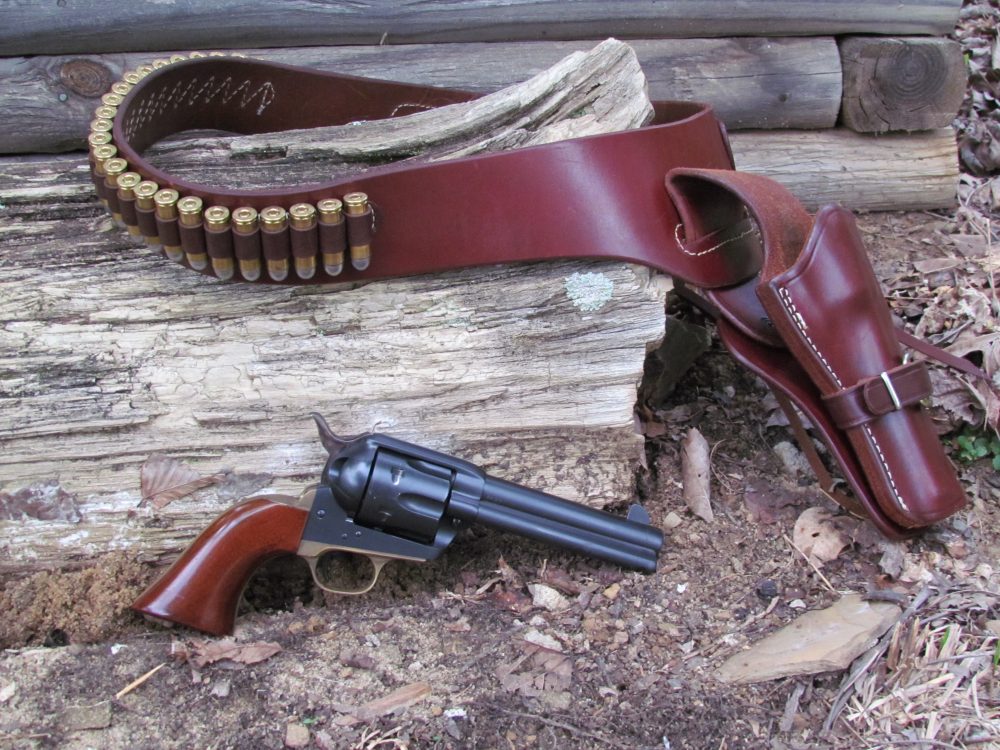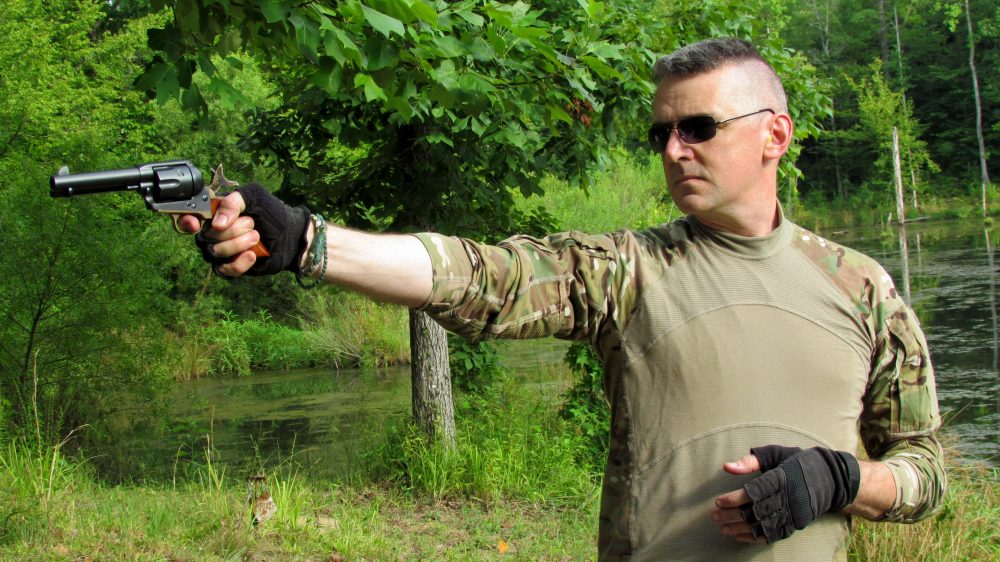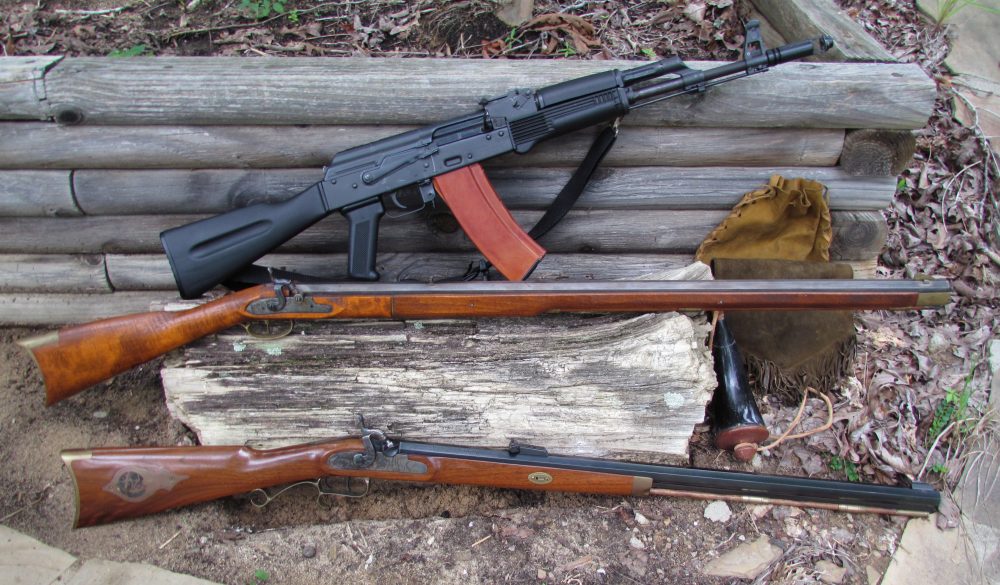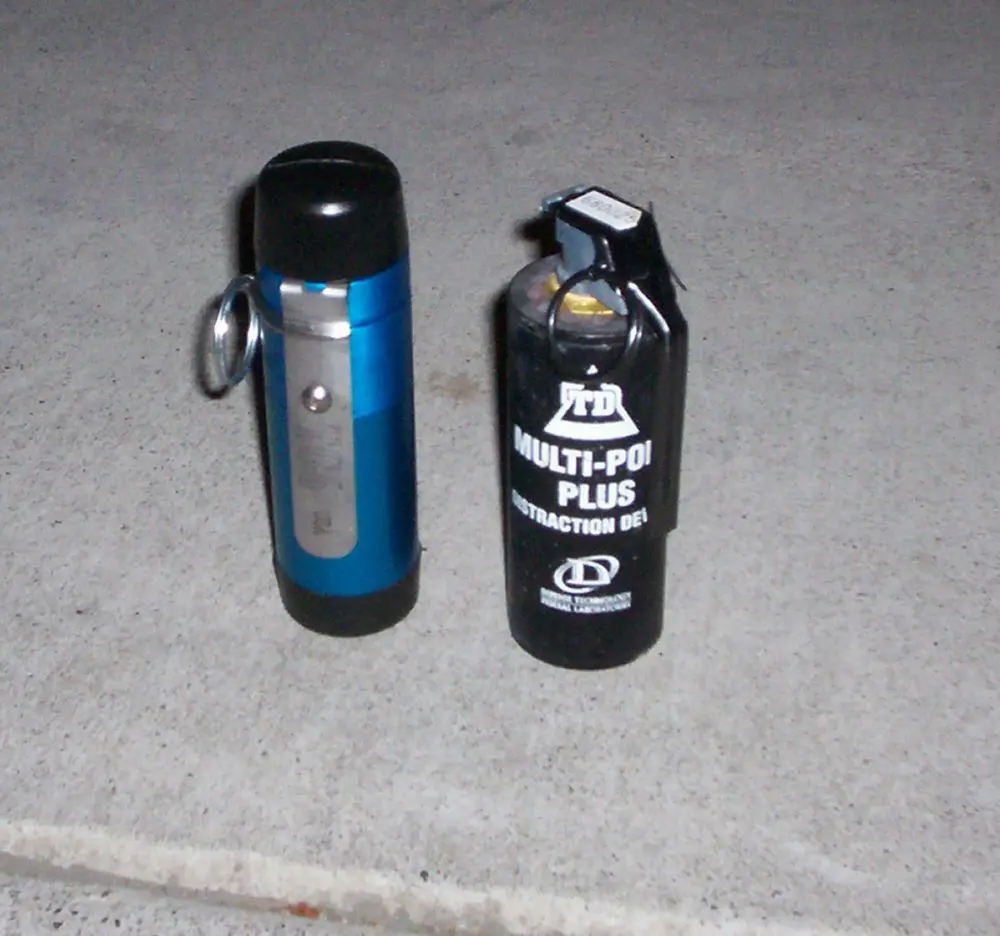Throughout history, military weapons in the hands of the civilian populace have represented the high water mark of a free society.
“Then the English archers stepped forward one pace and let fly their arrows so wholly and so thick, that it seemed snow—the sharp arrows ran into the men of arms and into their horses, and many fell.” — Jean Froissart, French historian describing the Battle of Crecy in 1346
While the history of mankind is characterized by war and conflict, that history is often driven by technology. Starting when that hypothetical early soldier tied a sharp rock to the end of a stick and made himself a spear, man has tried to produce weapons superior in effect and efficiency to those of his enemies. While the current public discourse on “assault weapons” incites frenetic opinions on both ends of the political spectrum, what seems to be lost is simply how tired the argument itself has become. The scariest full-auto polymer “assault rifle” of today will be ancient history a century from now.
There have been countless developments in the history of weapons that were tactical or even strategic game-changers. What is often forgotten today is that there were weapons of antiquity that had an effect on the world comparable to today’s semiautomatic rifle. The first was the English longbow.
In most states, law-abiding American citizens today can own small arms comparable to those used by the military. It is only through constant vigilance that we will retain our blood-bought blessings of liberty.
Table of Contents
GENESIS
Prior to the advent of the English longbow and the equally critical English longbowman, armored knights reigned supreme on the battlefield. Nobles trained as professional warriors and sported equipment that was financially out of reach of common men. Their presence on the battlefield was the tactical center of gravity. As the mounted noble cavalry went, so went the fight. Common men were little more than tools for the gentry to use at their whim and expend. The English longbow changed all that.
The apogee of the longbow as a military weapon occurred during the Hundred Years War. Fought between 1337 and 1453, this war was provoked by the claim of the English King Edward III to the French throne. It ended when King Charles VII pushed the English back across the Channel.
Each of these handguns was state of the art for its era. In a truly free nation, law-abiding civilians are granted access to the same hardware in use by the government.
WOODEN WEAPON OF MASS DESTRUCTION
The bow itself was typically formed from a select stave of yew wood. The flat side of the bow was formed out of sapwood, while the rounded portion was heartwood from the center of the stave. The bowstring was wound from hemp.
Arrows for the longbow were referred to as “clothyard” arrows and were mass-produced typically from ash or birch. Fletched with three flights made from goose or swan feathers, they were tipped with nasty barbed iron arrowheads.
A clothyard arrow weighed roughly what a .50-caliber BMG bullet does and produced a fearsome wound. For the guy on the receiving end, the longbow was indisputably effective.
In 1341, King Edward III accumulated 7,700 bows and 130,000 sheaves of arrows, which were stored in the Tower of London for use during his expeditionary forays. By the 1350s, not an arrow was to be found in England because they were all stockpiled for the war with France.
A typical combat load for an English longbowman was about 60 arrows. These projectiles would be carried in a quiver but, when called to action, might be arrayed in the archer’s belt or simply pushed nose first into the dirt for easy access, which gave the added benefit of causing more impressive wound infections.
In the days when weapons such as this were in common usage in America, private citizens had access to them just as did military formations.
CITIZEN SOLDIERS
Of equal importance as the bow was the archer who drew it. The use of the bow became so critical to the English national identity that all sports save archery were made overtly illegal so as to ensure a ready supply of archers.
An English archer was expected to be able to provide six aimed shots per minute at point targets or 12 shots per minute at area targets. Maximum effective range was between 200 and 300 meters. Archers were frequently arrayed along avenues of enemy advance to be able to engage a formation on its flanks. During the Battle of Agincourt in 1415, English archers fired 60,000 arrows in a single minute.
English archers were so despised by their opponents that any who were captured alive would have the first two fingers of their right hands amputated to prevent their ever again pulling a bowstring.
Legend has it that in the aftermath of the Battle of Agincourt, the victorious English archers passed in review of the defeated French nobles and held those two fingers up in the shape of a V as a sign of defiance. As a result, this symbol is employed as an obscene gesture in Europe to this day.
Advent of the metallic cartridge fundamentally changed firearm design. Samuel Colt’s revolver allowed its operator six rapid shots, fairly easy reloads, and weather resistance in a compact and reliable package.
TO THE RANGE
Accurately shooting a weapon with no sights is a function of muscle memory, conditioning and time behind the instrument. Any able-bodied operator can make the longbow shoot a fair distance, but consistently hitting a distant target is an art.
Most of our shooting was done at about 75 meters with contemporary aluminum arrows. As an experienced rifleman but a novice archer, I could replicate the 14th century standard of six rounds per minute into a man-sized target at this range.
At the expected ranges of 150 to 200 meters, I could not even get close. It would take weeks of practice and thousands of shots to train myself to a medieval standard of accuracy and proficiency.
Kentucky Long Rifle was slow to load but yielded superb accuracy compared to smoothbore muskets of the day. These civilian weapons were actually used as sniper’s tools in conventional military units.
TECHNOLOGY MARCHES ON
Starting around 1500, gunpowder began to have an effect on warfare. Early matchlock guns served generals, emperors and kings, but it was not until the independence of a disorganized little upstart colony in North America that arms in the hands of individuals once again shaped the geopolitics of the planet.
The English were in their ascendency during the mid to late 18th century, and the power projection apparatus of the English kings was embodied within the Royal Navy and the professional British Army. Wars were fought according to established rules, and the English Redcoat was the epitome of the disciplined and effective individual fighting man.
It was a rude shock to the English leadership when they were introduced to American partisans armed with the 18th century equivalent of assault weapons. Flintlock and later caplock versions of single-shot black-powder muskets were utility tools on the frontier. These weapons fed families, defended homesteads, and guaranteed civility in a time and place where civility was in short supply.
For the first time in human history, an entire nation was founded on the premise that the individual had innate value. The fact that this individual was armed with state-of-the-art weaponry meant that he demanded respect both in the eyes of his peers as well as in those of a new democratic government that was subservient to his will.
Hawken rifle was named after esteemed St. Louis gunsmith Samuel Hawken and is representative of the Plains rifles used on the frontier in the early 19th century. This one is chambered in .50 caliber and sports dual set triggers.
THE PENNSYLVANIA KENTUCKY RIFLE
The Kentucky Long Rifle was the typical armament of the rugged individualist in late 18th century America. Accurate, robust, and reliable if well-treated, the Kentucky Rifle was effective against both two- and four-legged predators while also providing ample meat from a frontier teeming with game.
The Kentucky Rifle had a better range than standard military arms of the day and so was frequently used as a sniper weapon. In contemporary usage, the Kentucky Rifle is slow to load but accurate with patched balls out to 300 meters. The trigger on my .45-caliber example is wretched, but the rifle itself packs a wallop downrange easily sufficient to drop a whitetail.
Colt 1851 Navy was a commonly used handgun on both sides of the American Civil War. Its revolving cylinder design pioneered the concept of handheld repeating firearms.
THE HAWKEN
The .50-caliber Hawken rifle was a coveted tool on the expanding American frontier of the early 19th century. It was produced by a gunsmith named Samuel Hawken in St. Louis, Missouri, and was typical of Plains rifles of the day. The Hawken rifle was effective out to comparable ranges as modern sporting rifles while possessing enough energy to dissuade the occasional belligerent grizzly.
The mountain man armed with a Hawken rifle was an island unto himself. No other man directed his destiny unless he was a master of stealth or more likely brought several friends.
The contemporary execution of the Hawken rifle is a thing of beauty. The set triggers make precision distance shooting within the reach of any competent marksman. On the range, the recoil from the .50-caliber ball is fairly impressive, and the smell of burned Pyrodex or FFG black touches a primal nerve. Half a dozen trained and experienced partisans armed with these weapons would be a formidable force even today.
Colt Peacemaker was accurate, reliable, and fairly quick to reload. It was sold to civilians before it was adopted by the military.
SOMETHING MORE PORTABLE
God made men, but Sam Colt made them equal.
Firearms leveled the field such that it was no longer the biggest, meanest man in the room who commanded respect. Portable repeating firearms inspired Robert Heinlein to opine, “an armed society is a polite society,” and so it is to this day.
The Colt 1851 Navy revolver was ubiquitous on both sides of the American Civil War and provided its operator with the capacity to unleash half a dozen aimed shots in seconds. Though the reloading process was remarkably laborious, soldiers and civilians alike now had access to firepower that had been unimaginable decades earlier.
On the range, the 1851 Colt Navy is indeed impressive. Individual cylinders must be greased on their distal ends with gun grease or animal fat to prevent chain-firing of all six loads at once. This happened to me once during a fit of laziness on the range, and the lesson I learned was indelible.
I cannot reliably hit a man-sized target beyond about 75 meters with mine, but six rounds in as many seconds is not a chore.
These three rifles were the “assault weapons” of their times.
SOMETHING COMPLETELY DIFFERENT
The advent of metallic cartridges forever changed the landscape. In their infancy, when combined with the Colt Peacemaker, the same six rounds of ready firepower as wielded by the 1851 Navy of the previous generation now came with quick, convenient reloads and a previously unthinkable weather resistance.
Against warm targets, the .45 Long Colt of the classic Peacemaker is profoundly effective. In my tests with gelatin, .45 LC ball rounds consistently penetrated through entire gelatin blocks that easily stopped modern calibers like 9mm, .45 ACP, .223 and 7.62 rounds.
The onboard ejector makes reloads relatively painless, while the eventual adoption of smokeless powder made cleaning and maintenance a snap.
THE MODERN ERA
Up until World War II, the typical military small arm was a somewhat modified version of the same sort of rifle that the typical rural American maintained for hunting and self-protection. Even in cities, most Americans had guns and most of those guns were nearly up to par with contemporary military arms.
Like everything else in our society, engineering, materials and science experienced quantum advances in the 20th century. Nowhere is that more overt than in small arms design.
Despite our justifiable grousing over draconian gun control laws, the modern responsible American has access to more firepower options than any previous generation. Literally millions of contemporary Americans own semiautomatic rifles.
Given the enthusiasm with which government ignores and tramples the rights of American citizens, I think it might reasonably be alleged that it is this massive body of armed Americans that stands implacably in the way of despotism in our great Republic.
Modern “assault weapons” (paying ill-deserved lip service to this literary abomination) are lightweight, effective, and remarkably affordable. Today’s American can, on a working man’s salary, procure an inexpensive AK or AR platform, a robust supply of magazines and accessories, and enough ammunition to keep Dianne Feinstein awake at night.
Today’s typical semiautomatic rifle is effective out to 400 meters, carries 30 rounds onboard, and instantly transforms its owner from one who is a defenseless subject into a citizen who, at least on a certain level, can cause his obscenely self-important government to pause and fear him slightly.
THE CIRCLE OF HISTORY
Throughout history—when it was expedient—the government of the day enthusiastically encouraged the private ownership of state-of-the-art military weapons. In areas where control of the population was in question, that same right has been mercilessly suppressed.
So it is today.
But as history shows, military ordnance in the hands of civilians is not new or novel. Our free forebears have owned and openly trained with “assault weapons” for half a millennium.
Military weapons in the hands of the civilian populace represent the high water mark of a free society, the ultimate evolution of government by and for the people.

